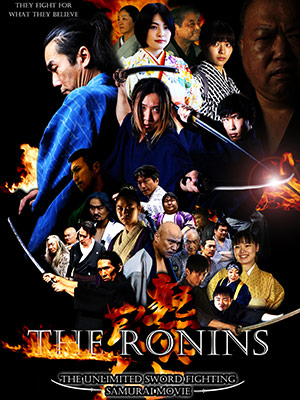The temple history records that in the year 850 the great priest Ennin (Jikaku Daishi), the third head abbot of the Tendai sect, was traveling around northern Japan when he became lost in a thick fog in this area and was unable to proceed another single step.
When Ennin glanced at his feet, he noticed the hair of a white deer lying there beside them. Intrigued, the priest followed the trail of hair to find its owner, a white stag. Ennin approached the deer, but it vanished into the fog. In its place appeared a silver-haired old man who told the abbot, "This is a sacred place. If you build a temple here, the Buddhist law shall surely spread among the people."
Ennin sensed that this old man was an incarnation of the healing Buddha, Yakushi, and followed his advice. The priest built a hall which he named Kashoji, after the name of that historical period (850 was year 3 of Kasho). And that is the legend of Motsuji's founding.
Founding and Construction
Motsuji was founded by Ennin (Jikaku Daishi; see above), though most of its structures were not built until the twelfth century, when the second and third Hiraizumi Fujiwara lords, Motohira and Hidehira, brought the temple to prominence. At its peak, Motsuji was a complex of 40 halls and stupas, and 500 monks' quarters. The temple is said to have exceeded even Chusonji Temple in size and magnificence. However, after the fall of the Fujiwara at the close of the twelfth century, several terrible fires reduced every last one of those buildings to ashes. The only original feature remaining is the Pure Land Garden centered on Oizumi ga Ike Pond. This outstanding twelfth century garden specimen was almost completely preserved and has been designated a Special Historic Site and Special Place of Scenic Beauty by the Japanese government.
The architecture of the new Hondo (Main Hall), completed in 1989, is faithful to the temple's Heian era roots.
Excavations
Excavations of the temple garden began in 1954 and lasted five years. These digs revealed that the garden had been exceptionally well preserved, and uncovered its scale and shape. The results agreed with the garden's description in Azuma Kagami, the official history of the Kamakura Shogunate. The artist's recreation at right is based on these archeological results.
Pure Land Garden
Pure Land gardens simulate the Pure Land of the Buddhist afterlife.
The pond here is called Oizumi ga Ike. The pond-centered garden was laid out in accordance with the precepts of Japan's oldest garden manual, Sakuteiki ("Treatise on Garden Making"), and includes elements like a peninsular beach area, rocky coastline and great rocks protruding from the lake's surface, bridges, mountainous elements, and a feeder stream, giving this garden area exceptional academic importance as well. Its beauty remains essentially unchanged for eight centuries, blending harmoniously with the surrounding trees to form an eternal landscape.
Temple Complex Site
For its outstanding cultural and historic value, Motsuji Temple is dually designated a Special Historic Site and a Special Place of Scenic Beauty. To the north is a hill called Mt. Doyama, before which spread out the wide open temple and garden complex. The elegance of the twelfth century garden is preserved in the mountainous formations and peninsular sea cliffs of Oizumi ga Ike Pond's rocks and the reflection of cedar and pine trees on its waters. As one of the most important sites in Japan's garden history, Motsuji's temple garden has been fully restored to its original state.
Poem of Matsuo Basho
"夏草や つわものどもが 夢のあと"
"Natsukusaya Tsuwamonodomoga Yumenoato."
"The Summer grass 'Tis all that's left of Ancient Warrior's deram." translated by Nitobe Inazo, the author of "Bushido."
-Kaizando Hall-
Enshrined the founder Jigakutaishi.
-Jogyodo Hall, built in 1732-
The principal image is a crowned Amida Nyorai.
-Yarimizu, Feeder Stream)-
The only extant Heian era feeder stream in Japan.
(Reference: Motsuji official information.)
Official Web Site:http://www.motsuji.or.jp/english/index.php






